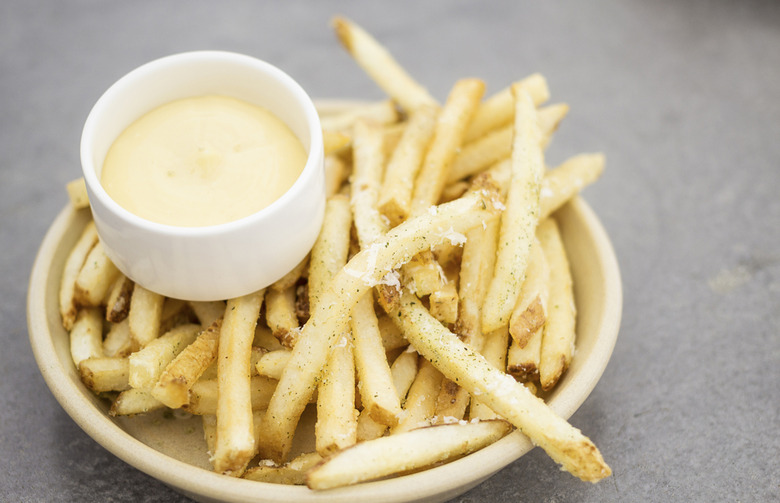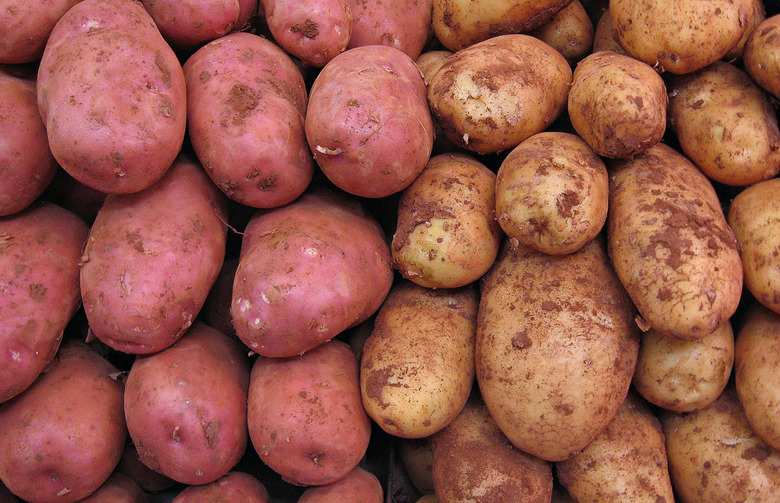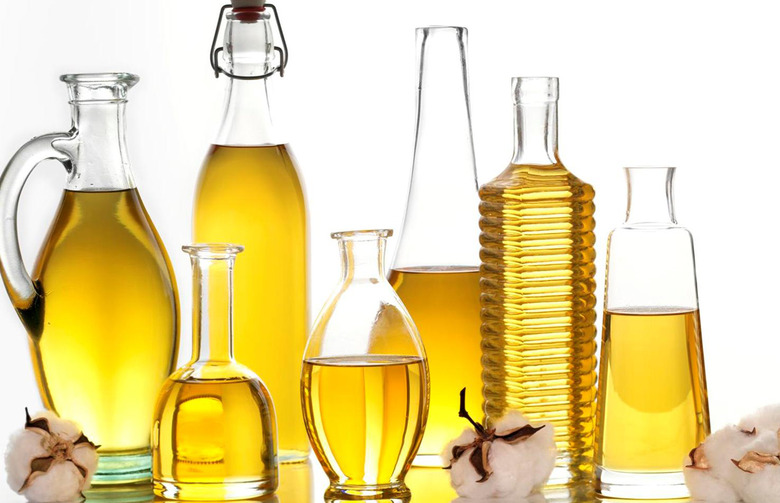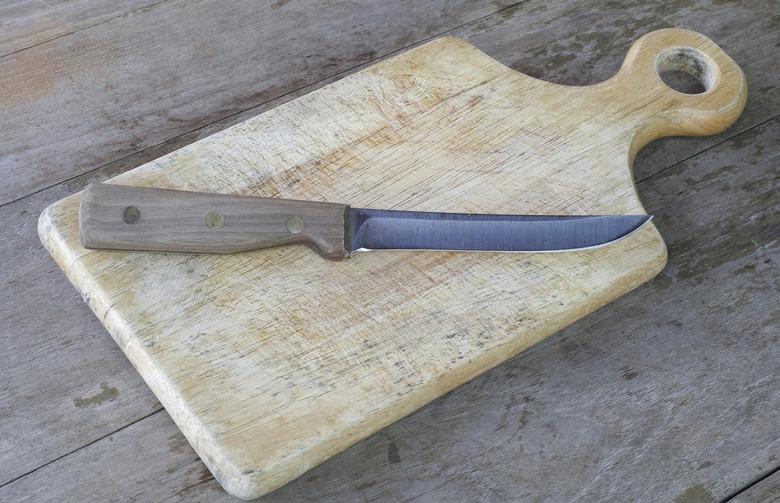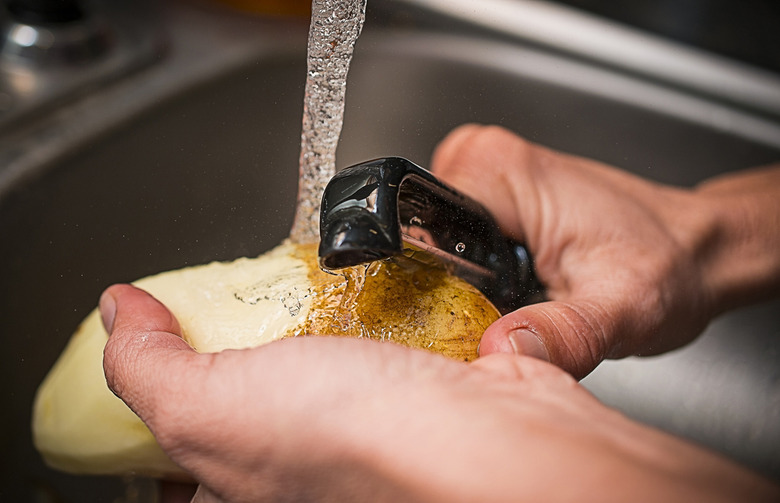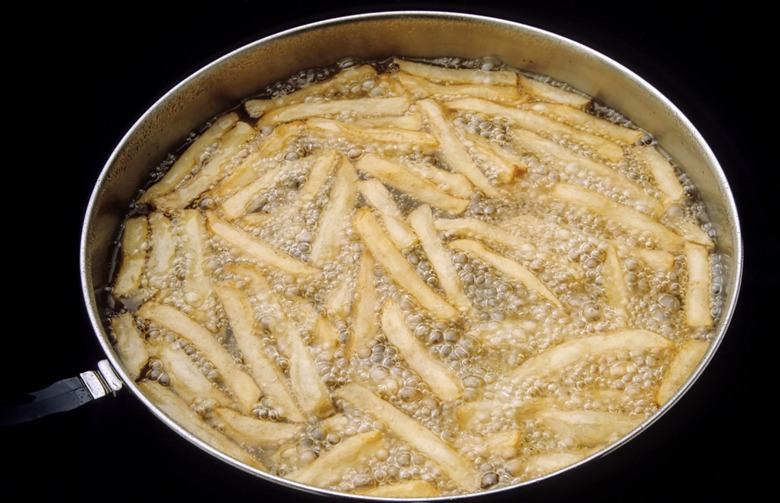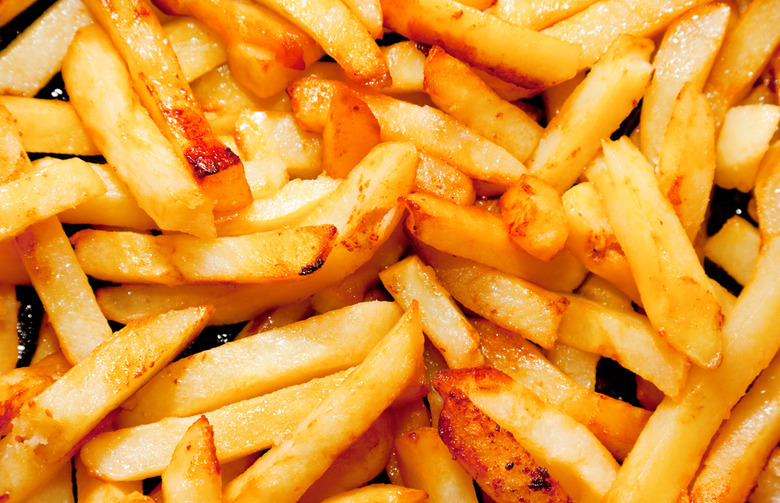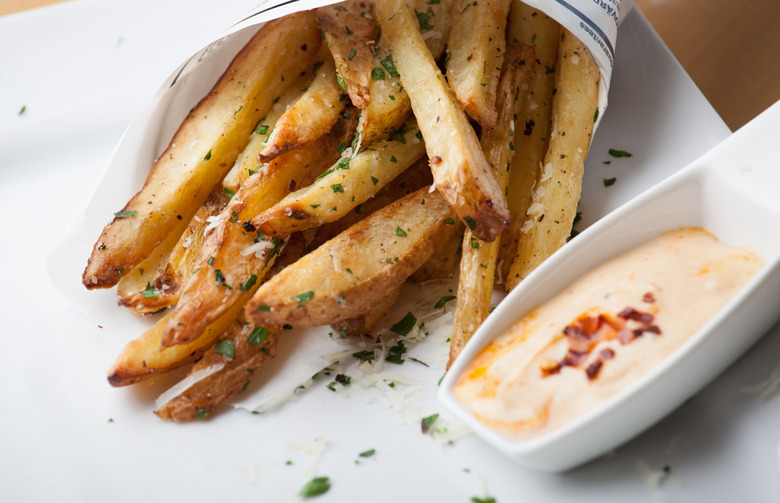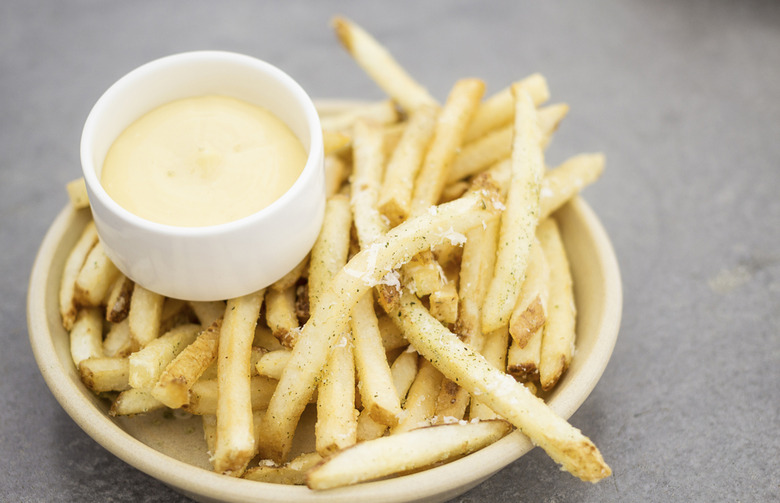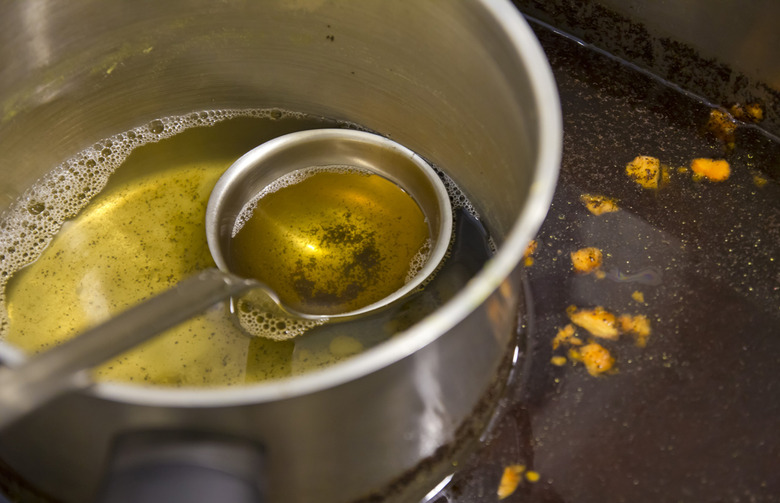The Definitive Guide To Making Fries At Home
When you find that ideal fry, golden brown on the outside, fluffy and soft on the inside, and not a drop too much oil, never let go — it's the unicorn of the French fry world. If you wonder what really goes into turning potatoes into crunchy fries, you may be surprised to learn that the steps are a little more difficult than throwing potato sticks into hot oil, but not nearly the challenge that you might think.
The Potato
The potato is crucial to the success of your fries. Russet potatoes, Bintje, and the less-common (in the United States, at least) Maris Piper make excellent choices for frying. Their high starch content results in a fluffy French fry. Equally important to your choice of potato varietal is its water content; too much and your fries will be soggy, too little and they will be crunchy throughout.
The Oil
Not all oil has the same smoke point. Because French fry oil needs to be heated to 400 degrees F, oil with a high smoke point is crucial for keeping the smoke detectors at bay. Vegetable oils with a neutral flavor tend to be the best choice. Safflower, peanut, and corn oil all have smoke points of at least 440 degrees F. Canola oil has a slightly lower smoke point at 400 degrees F, but can be used as long as you closely watch the thermometer.
Tools
Be sure to have all your tools set up and ready to go when you prep the fries. Once you start frying, things can move quickly, so you don't want to be fumbling around looking for that spider strainer while your potatoes go from golden brown to black. What you will need: a sharp knife, a potato peeler, a cutting board, a medium to medium-large heavy pan with at least three-inch sides, a thermometer, a spider strainer, and a plate with paper towels.
Peeling and Cutting the Potatoes
Wash and peel the potatoes. Then, square the potato, cutting off the rounded edges with a sharp knife. Next, cut the potato into quarter-inch-thick slices. Then, cut those slices into even quarter-inch batons (sticks). It is important that the potatoes are even in size so that they cook evenly.
Par-Frying
Par-frying ensures that the potato is soft and fluffy on the inside. Frying French fries is a two-step process, first cooking the potato until tender, then frying until crisp and golden. Using the thermometer, heat the oil in the pan until it reaches 300 degrees F. Maintain this temperature and add the fries to the pan in batches, being sure not to overcrowd. Have a plate with paper towels waiting. Cook the potatoes until they are softened, about 5 minutes. There should be no color on the potatoes at this point. Pull the fries out of the pan with the spider strainer and let drain on the paper towels, while you heat the oil to a higher temperature for frying.
Frying
Once you have par-fried all of the potatoes, heat the oil in the pan to 400 degrees F. Keep the oil at a temperature between 375 and 400 degrees F throughout the frying process. Again, add the fries in batches to not overcrowd. Cook the fries until they are golden brown on the outside, about 1 to 2 minutes. Then, remove the fries with the spider strainer and drain on a plate lined with fresh paper towels.
Seasoning
Immediately after pulling the fries out of the fryer, season with salt. If you wish to make herb fries, this would be the time to toss them with your fresh herb blend. Seasoning while the fries are still hot ensures that the salt sticks to the French fries.
Serving
Serve alongside your favorite sauce. Try a garlic aïoli, a special fry sauce, like this Spicy French Fry Dipping Sauce recipe, or homemade ketchup to add to the already incredible fry flavor.
Clean-up
What to do with the dry oil can pose the biggest problem when frying at home. Pouring oil down the drain will clog pipes and cause trouble, so to dispose of the oil, allow to cool, then transfer from the pan to a container. We recommend a plastic milk jug or metal coffee to avoid making a big mess when throwing the oil away.
